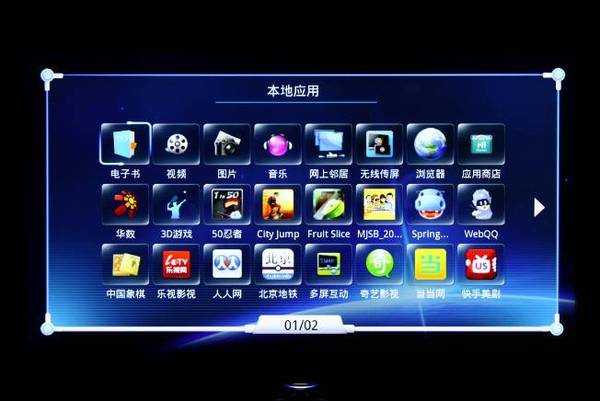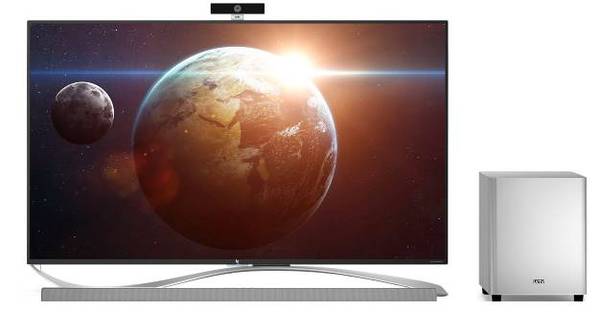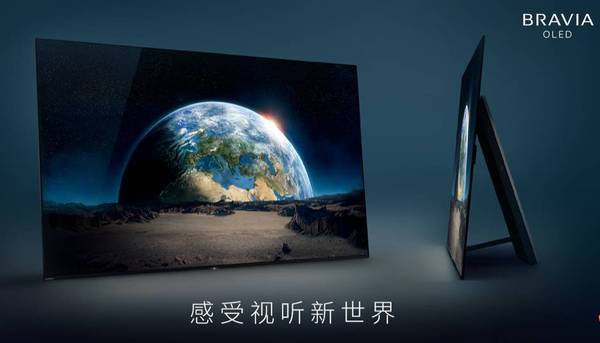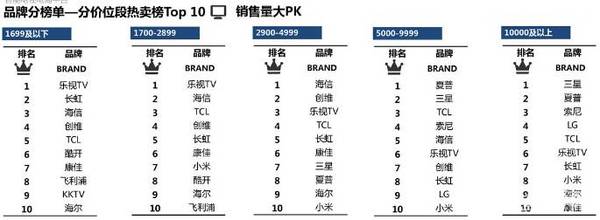China, Japan and South Korea TV War: Our sales are still the first worry
OFweek smart home network news "national husband" Wang Sicong showed off his TV - known as the world's first 100-inch large LCD TV Sony Z9D. The world of wealthy people does not understand, but it has lit the subject of television.
He listened to Uncle Old Liang and said that when he was a kid watching TV scenes, people in the village moved their stools to a wealthy person's home to watch Huo Yuanjia and the Eagle Shooting. They felt far away.
Since the beginning of the 20th century, television has gone through the core of the family's electrical appliances, and then to be neglected, but now it has risen again. These wave of waves, the development of the television industry is not easy.
From black and white to color, from the electron tube, the transistor to the integrated circuit, from the satellite broadcast to the satellite live broadcast, TV gradually moves towards the direction of intelligence and digitization.
The modern science and technology explosion has caused great changes in the television industry. The introduction of the Internet has made television more intelligent and has given television new life. China's TV brands have also experienced many years, and they have completed the process of surpassing and becoming the mainstream of the market. In the past two years, the sales of smart TVs by Chinese brands in the world have occupied the top spot.
However, in my opinion, domestic smart TVs still have hidden concerns.

(Image from internet)
Dazzling Smart TV
Nowadays, various brands are flooding the smart TV market. We can first look at some smart TV brands at home and abroad, especially in China, Japan, and South Korea.
1, domestic smart TV brand star dazzling
Let's talk about domestic smart TVs. Chinese brands are divided into two groups. Changhong, TCL, Hisense, and Konka are all traditional brands that belong to the “old name†in China. These old company's reputation and reputation have always been very good, plus the product's cost performance is really good, so it has always been the favorite of consumers.
The other school is the Internet rookie, like millet, music, micro whale and so on. When it comes to domestic smart TV, many people think of Changhong or TCL at the first time, but what I think of is LeTV.

The picture shows Le Super 4 X 50Pro
As for why I think of LeTV, that's because LeTV's advertising is doing great. When you open the video, you will hear "LTV Super TV." Before I went to a classmate's home, I saw the "real life" of LeTV. To tell the truth, the appearance is very beautiful, the white shell looks very technical sense, with a fine little speaker, watching all enjoy.
Millet smart TV is also a well-known brand in China. Millet has a wide range of activities, but it also does a good job in the areas it covers. On March 21, the fourth generation of millet TV was released, which is Xiaomi TV 4A.
According to the person in charge of the millet television at the conference, the 4A TV launched this time was more cost-effective and further pushed down the price and expanded the market in the context of the overall price increase of the industry. And adding more high-end intelligent voice capabilities, not only to promote a more important point, but also allows users to operate easier.

The picture shows the millet TV 4A (55 inches)
Of course, there are many smart TV brands in China, such as Hisense, Skyworth, and Konka. Compared to Xiaomi, these are the "older generation" of the country. However, the "elderly generation" did not withdraw from the market stage. Instead, it followed the pace of the times and kept steady.
The television I watched in my childhood was Konka. The small color TV, which was still very heavy at that time, has now become a 4K LCD smart TV. The progress of the era has not made it history, but it has become one of the big names in the industry.
2. Japanese and South Korean smart TV brands are still high-end
In 2016, the market share of the global smart TV market was stable in China, but in terms of foreign market share, the share of Chinese brands was only about one-tenth that of South Korea. Samsung and LG, as Korea's two leading companies, certainly have a lot of power.
Samsung is an international company. It does a good job on mobile phones and TVs. Especially Samsung's screen, comfortable and atmospheric. Compared to the mobile phone industry, Samsung is also a “big brother†in the smart TV industry. For 11 consecutive years, it has topped global TV sales charts.

The picture shows the 65-inch Samsung QLED TV Samsung quality sub-point TV
Samsung's TV highlights the fineness of the screen and the shock of the screen. Moreover, since the debut of Samsung QLED (Quantum Dot Light Emitting Diodes) light quality sub-dial TV on CES, it has been the focus of public opinion and the media. QLED TVs have a bright backlight, constant impact, and superb color. The appearance of the Samsung QLED light quality sub-point TV really shocked the industry.
Another big brand company in South Korea that shares the same name with Samsung is LG. The biggest selling point of LG smart TV is IPS hard screen, not flash 3D. Compared to Samsung's shock on the screen and the screen, LG pays more attention to the operating system of smart TV itself, which makes LG smart TV has a strong compatibility, smart applications are also a little more.
At the CES 2017 at the beginning of the year, LG also released a flagship LG OLED E6. Ultra-clear picture, ultra-thin body, stunning colors have made LG received a lot of praise.
After all, it is the OLED TV market leader in the past few years, LG OLED E6 high-end models in all aspects of performance, compared to Skyworth, Philips, Changhong, Konka's OLED TV products are slightly stronger.

The picture shows the Sony OLED A1 TV
At the same time, at the conference, a large brand company also launched the latest smart TV, which is Sony. Sony released the latest OLED A1 TV, compared to LG OLED E6 TV, Sony OLED A1 picture quality is a bit better. In any era, Sony is also hailed as the “spokesperson†of quality. Of course, the prices of both are also high.
Sales first is a good starting point
In the first half of 2016, the global smart TV market share of Chinese brands exceeded 40 percent for the first time, compared with 37.1% of Korea's in the same period. This is China's number two ranking in the smart TV market for two consecutive years.
So, does China win the smart TV market? I think the answer is no.
At least, it is definitely not a victory. At present, domestic smart TV brands only occupy a leading position in sales, but in other respects, they still have a certain gap with some of Japan and South Korea's big brands.
Korean brands win over design, display and concept. Samsung and LG are different. For example, Samsung's recently established company-level AI voice system has produced a resounding slogan: Our goal is to eliminate the remote control.
Japanese brands have great advantages in display. For example, this CES 2017 Sony brought the OLED A1 TV has one of the most shocking place, that is, there is no speaker, but let the screen itself emit sound directly.

Therefore, although the results of the global market share leading people are gratifying, they cannot be taken lightly. Chinese brands of smart TVs, the main market is domestic, but mainly in the low-cost market.
In terms of foreign market share and high-end smart TV market share, China’s share is far lower than South Korea, even lower than Japan and the United States.
Rookies are hope
In China's current smart TV market, veteran manufacturers such as Changhong, Konka, and TCL occupy the majority of the market. However, I believe that a group of newcomers such as Xiaomi and LeTV are the hope of winning competition in the international market in the future.
Compared with Changhong and other established manufacturers, rookie companies often have the spirit and strength to dare to try and challenge. At this CES 2017, Xiaomi released the millet TV 4, a borderless design, and a split design similar to the Xiaomi TV 3, but it was thinner than the Xiaomi TV 3 to create a truly ultra-thin TV. Starting from Xiaomi TV 3, Xiaomi also played the banner of an artificial intelligence TV, which has greatly enhanced its brand image while enhancing the user experience.
In addition to LeTV and Xiaomi, there is also a TV maker that is gradually becoming known to everyone. It is a micro whale. The microwhales put forward three new concepts of ultra-thin (the thinnest at the thinnest point, the thinnest at the thickest point, and the thinnest distance from the wall) in the development and production of smart TVs. At CES 2017, the world’s first ultra-thin ultra-thin splitter was jointly developed with Corning.
So, although China’s TV manufacturers still have a certain gap with other countries, Chinese companies have demonstrated a vigorous entrepreneurial spirit and have also demonstrated international ambitions: Buying Vizio’s LeTV for US$2 billion. The United States market is stunned, and millet has consistently attacked the US market with low prices.
The positive attitude of Chinese companies in product R&D and their active performance in the international market have made other companies in all countries afraid to take it lightly.
I think that in order for a Chinese brand smart TV to win, we must do the following:
1. Maintain the absolute leading advantage of domestic sales;
2. Focus on third-world countries' markets with a focus on cost performance;
3, increase product development, to enter the high-end market;
4, increase the development of smart TV applications, increase "soft power";
5. The strategy of "encircling the cities in rural areas" is still valid in the foreign smart TV market.
Guangzhou Ruihong Electronic Technology CO.,Ltd , https://www.callegame.com